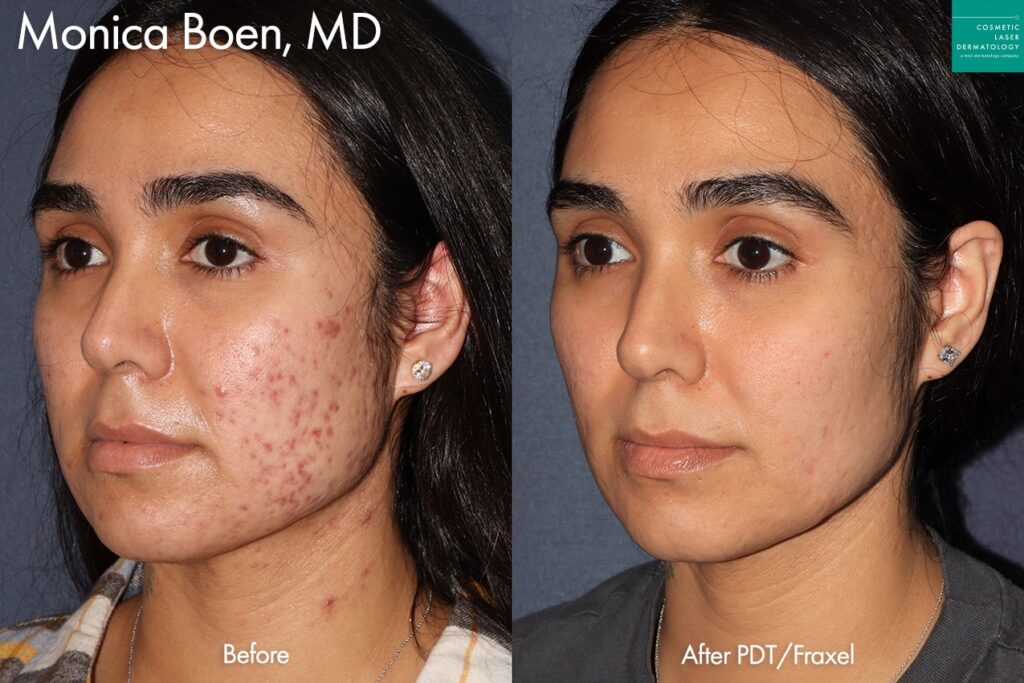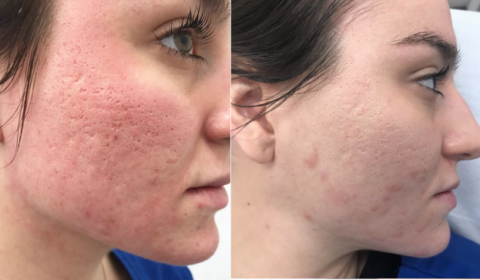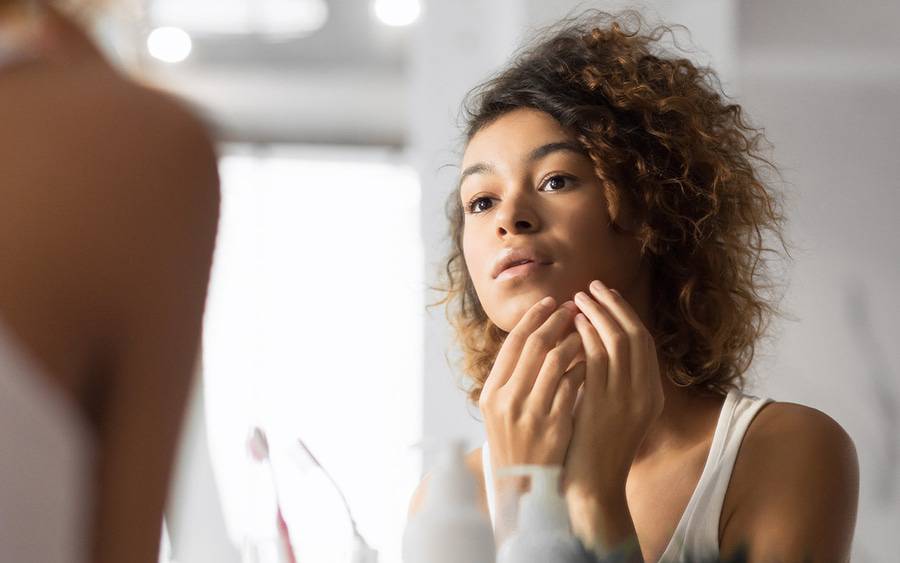Top Acne Treatment for Sensitive Skin: Mild Solutions for Clear Skin
Top Acne Treatment for Sensitive Skin: Mild Solutions for Clear Skin
Blog Article
Comprehending the Various Skin Problem and Effective Treatment Alternatives for Acne Marks
Acne scars represent a complicated interaction of skin problems that dramatically impact individuals' self-esteem and total skin wellness. As we check out the landscape of acne mark management, it comes to be evident that the journey towards more clear skin might entail more than just topical services.
Kinds Of Acne Scars

In comparison, hypertrophic scars arise from an overproduction of collagen during the recovery process, leading to increased areas on the skin. These scars are usually strong and can differ in color, occasionally appearing red or darker than the surrounding skin.
Understanding these sorts of acne marks is essential for creating an effective therapy plan - skin rejuvenation treatments. Choices might consist of chemical peels, laser therapy, microneedling, or dermal fillers, tailored to the particular mark kind. A comprehensive assessment with a dermatologist can help figure out one of the most ideal intervention, thinking about the individual's skin type, scar extent, and overall skin health
Sources Of Acne Scarring
Marking takes place as a result of the body's natural healing action to swelling and injury brought on by acne sores. When acne types, it causes an inflammatory response, leading to the release of different cytokines and development aspects that advertise recovery. This process can sometimes lead to too much cells formation or inadequate repair, resulting in marks.
The key root causes of acne scarring include the seriousness of the acne itself, duration of the lesions, and specific skin kinds. Extreme inflammatory acne, such as nodules and cysts, is more probable to cause scarring because of much deeper cells damage. Additionally, improper handling of acne sores, such as choosing or squeezing, can exacerbate tissue injury and inflammation, increasing the possibility of scarring.
Genetic predisposition additionally plays a substantial function; people with a household background of scarring are at a greater danger. Additionally, skin kind and color can affect scar development, as darker complexion might experience post-inflammatory hyperpigmentation, while lighter skin may develop atrophic marks.
Ultimately, understanding these causes is vital in taking care of acne and alleviating the potential for scarring.

Therapy Alternatives for Scarring
Effective therapy choices for acne scarring vary depending on the kind and extent of the scars. Generally classified into atrophic, hypertrophic, and keloid scars, these problems require tailored strategies for ideal results.
For atrophic marks, which are defined by a loss of cells, therapies such as chemical peels, microdermabrasion, and laser therapy are generally utilized. These methods advertise skin revival and boost collagen production, thereby enhancing skin texture. Subcision, a minimally intrusive procedure, can also be reliable by damaging up coarse bands underneath the skin.
Hypertrophic and keloid marks can be much more challenging to treat. Choices consist of corticosteroid injections to decrease inflammation and flatten the scars. In many cases, cryotherapy or laser treatment might be suggested to decrease their look.
Surgical alternatives are offered for severe scarring, where excision or skin grafting might be required. It's vital for individuals to talk to a skin doctor to evaluate their certain scar kind and discuss the most appropriate therapy strategy. Incorporating multiple treatments frequently generates the ideal end results, ensuring that each client's one-of-a-kind skin disease is attended to efficiently.
Home Treatments and Natural Solutions
Natural solutions and natural home remedy can supply an easily accessible method for people looking for to boost the appearance of acne marks (acne and acne scars treatment). Various active ingredients located in the home cooking area have actually shown potential advantages in enhancing skin texture and advertising healing

One more efficient option is lemon juice, which works as a natural exfoliant and can lighten hyperpigmentation. However, it must be made use of cautiously, as it may trigger photosensitivity. Oatmeal masks are also valuable; their gentle exfoliation can help remove dead skin cells while calming inflammation.
Vital oils, such as tea tree oil and lavender oil, can additionally support scar healing as a result of visit our website their antimicrobial homes. It is vital to do a patch examination before using any treatment to make certain there are no damaging responses. These all-natural options can be a corresponding strategy in the journey to reduce acne marks.
Stopping Future Scarring
Taking on a proactive method to skin care can dramatically reduce the threat of establishing future acne marks. Among the vital strategies is to manage acne effectively as it occurs. This includes using non-comedogenic skin care items and medications suggested by dermatologists that target acne without irritating the skin. Normal cleaning, exfoliation, and hydration can aid keep skin health and wellness and protect against clogged up pores.
Additionally, avoiding the temptation to press or choose acne sores is vital, as this can lead to swelling and succeeding scarring. Instead, individuals need to concentrate on using useful source topical therapies that advertise recovery and lower swelling. Components such as salicylic acid, benzoyl peroxide, and retinoids are known for their effectiveness in handling acne and minimizing scars.
Sun security is another crucial element; direct exposure to UV rays can hinder and darken marks recovery. Making use of a broad-spectrum sunscreen daily can mitigate these impacts.
Last but not least, preserving a healthy diet rich in antioxidants and staying moisturized supports skin regrowth. By carrying out these safety nets, people can considerably reduce their danger of future scarring and promote overall skin wellness.
Final Thought
Finally, an extensive understanding of acne marks, incorporating both atrophic and hypertrophic types, is crucial for reliable therapy techniques. Tailored interventions, including professional treatments and natural remedy, can significantly boost skin appearance and texture. Safety nets also play an important duty in reducing future scarring. Consultation with a skin specialist continues to be vital to devise personalized methods that take into consideration individual skin types and scar seriousness, eventually improving the efficiency of scar management techniques.
Acne marks represent a complex interplay of skin conditions that significantly influence individuals' self-esteem and general skin wellness. The 2 key classifications of acne scars are hypertrophic and atrophic scars. These scars are additional classified into three subtypes: ice pick marks, which are slim and deep; boxcar marks, which are wider and have well-defined sides; and rolling scars, which produce a wave-like appearance due to unequal skin appearance.
A comprehensive assessment with a dermatologist can help figure out the most proper intervention, taking into account the person's skin type, mark seriousness, and overall skin why not try here health and wellness.
Assessment with a skin specialist continues to be essential to develop customized techniques that think about specific skin kinds and scar intensity, ultimately enhancing the effectiveness of scar monitoring methods.
Report this page